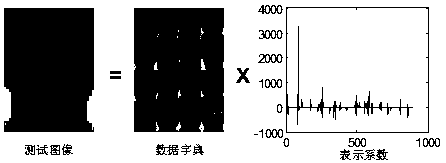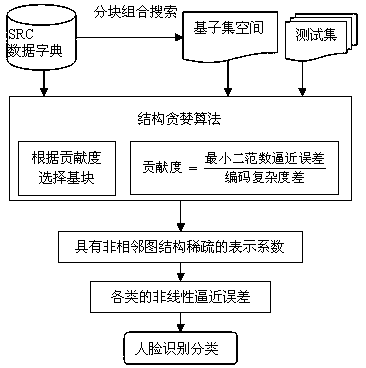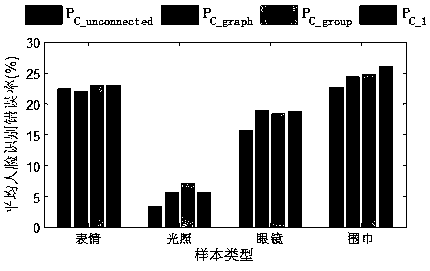A Non-adjacent Graph Sparse Face Recognition Method
A face recognition and graph structure technology, applied in the field of sparse representation of face recognition, can solve the problems of sparse graph structure, lack of continuity in data dictionary, not suitable for SRC model, etc., to improve system stability and improve face recognition rate , the effect of improving the face recognition rate
- Summary
- Abstract
- Description
- Claims
- Application Information
AI Technical Summary
Problems solved by technology
Method used
Image
Examples
Embodiment Construction
[0037] The present invention is used to improve the face recognition performance of SRC model, and its specific embodiment is, at first constitutes the data dictionary by the training sample of known classification, and the generated data dictionary D∈R n×p Arranged by class; then according to the structure of the data dictionary, use block combination search to generate the base subset space; use the data dictionary, base subset and test set as the input of the structural greedy algorithm, and use the structural greedy algorithm to solve the non-adjacent graph structure Sparse representation coefficient α; finally calculate the nonlinear approximation error of each category for discriminant classification.
[0038] The method of the present invention is verified by some face recognition experiments below. The database uses the AR cropped face database and the extended YaleB face database. There are a total of 2,600 images of 100 people in the AR library, which are divided in...
PUM
 Login to View More
Login to View More Abstract
Description
Claims
Application Information
 Login to View More
Login to View More - R&D
- Intellectual Property
- Life Sciences
- Materials
- Tech Scout
- Unparalleled Data Quality
- Higher Quality Content
- 60% Fewer Hallucinations
Browse by: Latest US Patents, China's latest patents, Technical Efficacy Thesaurus, Application Domain, Technology Topic, Popular Technical Reports.
© 2025 PatSnap. All rights reserved.Legal|Privacy policy|Modern Slavery Act Transparency Statement|Sitemap|About US| Contact US: help@patsnap.com



